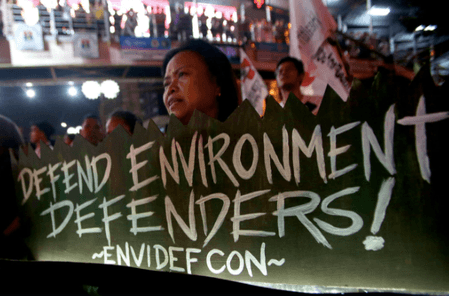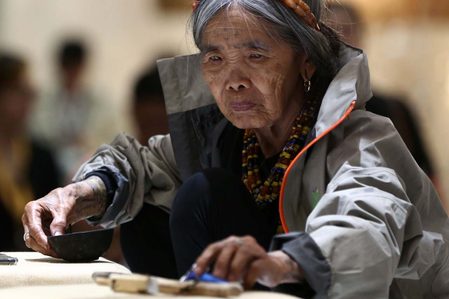SUMMARY
This is AI generated summarization, which may have errors. For context, always refer to the full article.
![[ANALYSIS] When the ‘native’ is not indigenous](https://www.rappler.com/tachyon/2021/10/TL-indigenous-1280.jpg)
How many times have you heard someone say that to learn about “untainted Filipino culture, you go up to the mountains and observe indigenous peoples?” The dominant narrative of being indigenous in the Philippines is founded on the myth of being isolated and having an unchanging culture through centuries of existence. This concept is borne out of the long and pervasive experience with colonialism, reified by basic education curricula and institutionalized by statutes. Among many Filipinos, including those in the diaspora, the indigenous versus Christian/Muslim Filipinos artificial dichotomy was catalyzed by American policies, which were maintained by the Philippine state after independence in 1946.
This dichotomy was on display at the 1904 St. Louis World’s Fair, where the United States showcased its new possession in the Pacific to the American public. It was a chance to appeal to broaden the support of US annexation of the Philippines. The United States, a country borne out of its fight against imperialism was becoming an imperialist itself. As the centerpiece of the 1904 St. Louis World’s Fair, 1,102 Filipinos were juxtaposed among one another to show that colonialism was needed to help non-Christian Filipinos become civilized. As the 1904 World’s Fair organizers put it, “to help our little brown brothers govern themselves.”
In this vein, the misconstruction of being indigenous is akin to being uneducated, backwards of sorts. The messianic complex of colonialism continues today with how indigeneity is understood by many laypersons. The United States differentiated its brand of imperialism against those of European colonialism by emphasizing the concept of Benevolent Assimilation. It meant that the US was only helping emerging nation-states acquire the ability to self-govern; that the former will eventually afford the latter independence.
Thus, Philippine curricula were racialized to craft Filipino identity as colonized subjects and as a vehicle of the transnational propagation of a racially conscious US educational policy and curriculum in the early 20th century. It is not surprising then, that these foundations of the Philippine education system have resulted in a destructive concept of differences, instead of inclusivity.
The Indigenous Peoples Rights Act (IPRA) of 1997 was meant to address some of the injustices experienced by Philippine IP groups. However, IPRA’s legalese is founded on some of the racialized historical narratives of the Philippines, including isolationist models, pitting Christian and Muslim communities against those who actively resisted being part of these world religions. IPRA also reprises the oft-cited and debunked Waves of Migration Theory.
Locating the indigenous
IPRA defines indigenous cultural communities/indigenous peoples as “…a group of people or homogenous societies identified by self-ascription and ascription by others, who have continuously lived as organized community on communally bounded and defined territory, and who have, under claims of ownership since time immemorial, occupied, possessed, and utilized such territories, sharing common bonds of language, customs, traditions, and other distinctive cultural traits, or who have, through resistance to political, social, and cultural inroads of colonization, non-indigenous religions and cultures, became historically differentiated from the majority of Filipinos (emphasis ours).
ICCs/IPs shall likewise include peoples who are regarded as indigenous on account of their descent from the populations which inhabited the country, at the time of conquest or colonization, or at the time of inroads of non-indigenous religions and cultures, or the establishment of present state boundaries, who retain some or all of their own social, economic, cultural, and political institutions, but who may have been displaced from their traditional domains or who may have resettled outside their ancestral domains.”
This legal definition is meant to empower and provide rights and privileges to historically marginalized Philippine groups. However, it is also exclusionary. Quoting our colleague, Dada Docot, the definition highlights the idea that “a native is not indigenous.” This is a product of our long and pervasive colonial history. As such, our understanding of indigeneity in the Philippine context is replete with colonial engagement. The Spanish reducción policy, for example, forced the resettlement of populations within the confines of the church bells’ acoustics, and thus, reorganized the dynamics of conquered groups. Those outside the Bajo de Campana (under the bell) were regarded as cimarrones or infieles.
When we hear people say, “indigenous because they are unconquered,” it’s based on our colonial experiences and has become the source of prejudice against the indigenous. The reference to the term indigenous should be more of empowerment rather than historical since the latter makes it pejorative.
Research and the FPIC
The Philippines, with 185 or so languages and with about 11 million indigenous peoples distributed across the archipelago, is certainly a pluralistic country. However, the aspiration to assimilate everyone into a single national identity has created an environment that accelerated indigenous erasure. The shift to K-12 education mandates that the Department of Education contextualize history curricula in local realities. This is a big step in recognizing the importance of strengthening the ethnic identities of indigenous youth. Studies have shown that children who have stronger sense of their ethnic identities tend to succeed in life. More research, conducted with indigenous communities, would address the dearth of historical and cultural materials that relates to our indigenous heritage.
When carrying our research with ICCs/IPs, IPRA requires that the Free and Prior Informed Consent (FPIC) be accomplished. FPIC requires that “…the consensus of all members of the ICCs/IPs to be determined in accordance with their respective customary laws and practices, free from any external manipulation, interference, and coercion, and obtained after fully disclosing the intent and scope of the activity, in a language and process understandable to the community.” This requirement is well-meaning and is meant to protect both the indigenous groups and researchers. However, the process has become bureaucratic.
Issues regarding the issuance of FPIC permits through NCIP have been fairly documented among researchers. But at least for the IPs/ICCs, what are the most basic steps, perspectives, and approaches researchers should take in wanting to pursue projects or research with them?
1. Objectives of the research should be well presented to the communities. How will the community benefit and how will the proponent benefit from the research? Researchers/proponents should be honest as to what they would derive from the project. Researchers go to the community because they need the latter’s help and not the other way around. Enough with the messianic overtures.
2. Walk your talk. Indigenous communities are usually exploited because they presume the goodness of people and mere words are binding. Whatever you say as a researcher binds you to an obligation, which you should act on.
Empowering communities
It has always been problematic the way researchers appear in indigenous communities with the goal of finding out more about their culture and history. They come in with some bias and perhaps, unknowingly, with a subjective mindset. Let us revisit the concept of “educating the locals.” Instead, it should be much more of involving the communities in the entire process by working with them as active members. Providing easy access to resources and tools offers the opportunity for empowerment and would correct exclusionary mindsets. We should also attempt to correct how we define indigeneity in the Philippines, focusing on diversity and inclusion, rather than the divisive historical isolationism.
October is National Indigenous Peoples Month in the Philippines. Let’s celebrate diversity and inclusivity. Empowerment comes from dismantling colonial structures that perpetuate divisions and exclusion. – Rappler.com
Marlon Martin is COO of the Save the Ifugao Terraces Movement, Kiangan, Ifugao.
Gina Lumauig is a freelance writer and member of the Board of the Philippines Communication Society.
Stephen Acabado is Associate Professor of Anthropology and Director of the Center for Southeast Asian Studies, UCLA.
Add a comment
How does this make you feel?
![[OPINION] Sa ngalan ng kaunlaran: Development for whom?](https://www.rappler.com/tachyon/2020/11/lumad-landgrabbing_640.jpg?fit=449%2C360)


There are no comments yet. Add your comment to start the conversation.